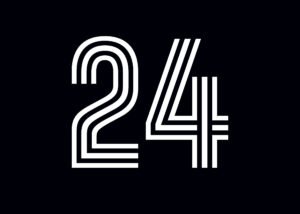Wimbledon’s AI Line-Calling System Sparks Debate Among Players
This year, wimbledon introduced a important innovation by replacing traditional human line judges with an artificial intelligence-driven electronic line calling system (ELC). This pioneering move, debuting during the current tournament, has stirred a variety of reactions from both players and spectators.
Concerns Raised About AI Accuracy and Communication Challenges
Several athletes have expressed dissatisfaction with the AI’s decision-making accuracy. British tennis sensation Emma Raducanu publicly criticized the technology after it failed to call a clearly out ball against her opponent.video replays confirmed that the shot landed beyond the boundary lines, yet it was incorrectly ruled in play, forcing Raducanu to continue under unfair circumstances.
Jack Draper, Britain’s top-ranked male player at present, also voiced skepticism regarding the system’s dependability. He remarked that he did not trust the AI to be “100 percent accurate,” emphasizing worries about inconsistent calls affecting match outcomes.
Operational Issues Disrupting Match Rhythm
The ELC system has faced technical difficulties beyond just questionable calls. For instance, American player Ben Shelton was pressured to speed up his gameplay because officials warned that diminishing daylight could impair the AI’s functionality. Additionally, some competitors reported trouble hearing announcements made through Wimbledon’s automated speaker setup.
A deaf participant highlighted another critical limitation: without human line judges’ traditional hand signals indicating point results, she found it challenging to track match progress effectively.
A Critical Incident Exposes System Flaws
A notable episode unfolded during a contest between british athlete Sonay Kartal and Russian Anastasia Pavlyuchenkova when an obvious out-of-bounds shot went uncalled due to a technical glitch disabling ball tracking mid-rally. The chair umpire intervened promptly and ordered a replay of that point onc this malfunction was detected.
Wimbledon later apologized for what they described as “human error” behind this failure and assured adjustments had been implemented to avoid similar issues in future matches.
The Ongoing debate: Human Officials Versus Automated Technology
Debbie Jevans, chairperson of wimbledon’s governing body-the All England Club-defended adopting electronic officiating by highlighting its enhanced precision compared with manual line judging used at many othre tournaments worldwide.
“When we still employed linesmen,” she explained,”we were frequently enough asked why we hadn’t embraced electronic calling earlier as it provides greater accuracy than most tour events.”
Tennis’ Technological Evolution Amidst Resistance
This controversy is part of broader tensions surrounding automated officiating tools in tennis. Earlier this year at another major event, German star Alexander Zverev openly challenged similar AI-based line calls after several balls clearly outside were mistakenly ruled in by technology alone.
The debate highlights challenges inherent in fully replacing human judgment with artificial intelligence within sports where split-second decisions can dramatically influence results-underscoring ongoing friction between tradition and innovation on court.
Pursuing A Balanced Approach: Combining Human Judgment With AI Precision
- The controversy strengthens arguments favoring partial human oversight alongside technological assistance rather than full automation;
- This hybrid approach reflects trends seen across industries-for example, companies like Klarna recently reversed plans for complete automation by reintegrating humans into customer service roles;
- An ideal model would leverage humans’ contextual awareness together with machines’ data-driven exactness while mitigating weaknesses each faces individually;
- Tennis authorities might explore hybrid officiating systems ensuring fairness without compromising efficiency or transparency moving forward.





